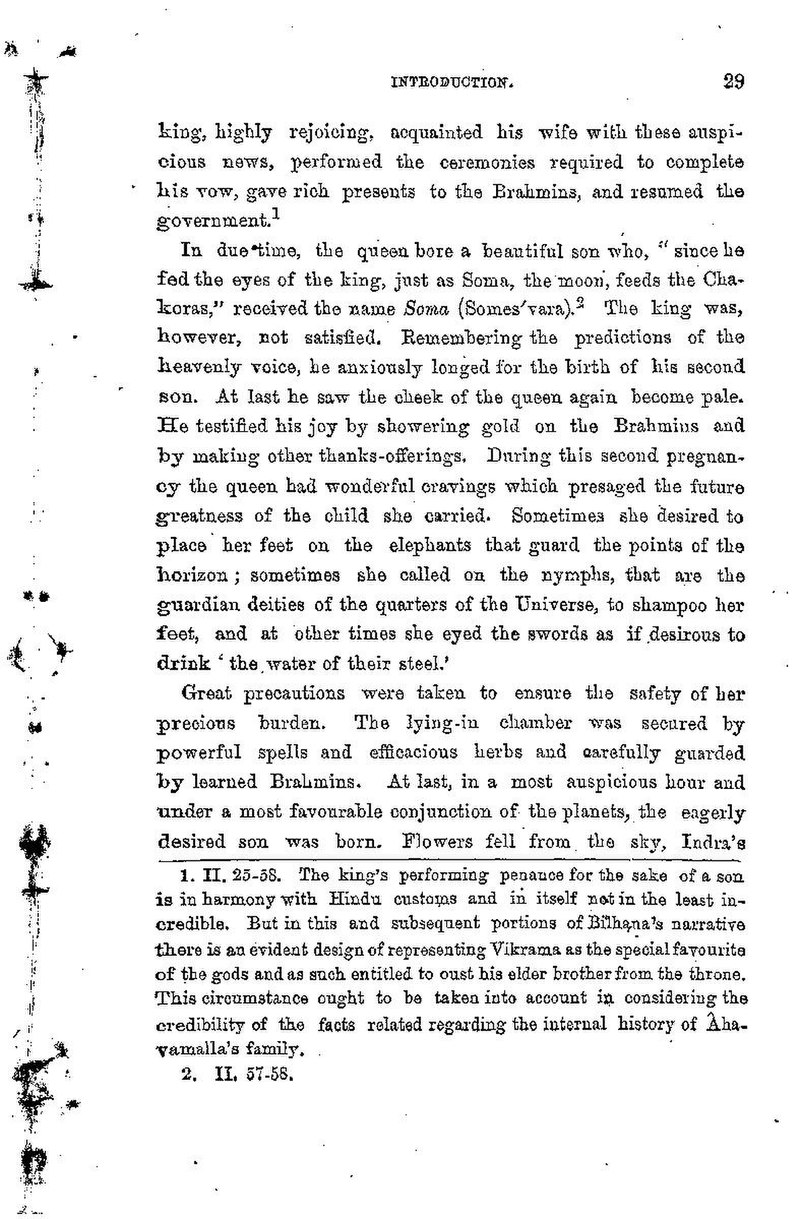2....
INTRODUCTION.
29
king, highly rejoicing, acquainted his wife with these auspi-
cious news, performed the ceremonies required to complete
his vow, gave rich presents to the Brahmins, and resumed the
government.1
20
In due time, the queen bore a beautiful son who, since he
fed the eyes of the king, just as Soma, the moon, feeds the Cha-
koras," received the name Soma (Somes'vara). The king was,
however, not satisfied. Remembering the predictions of the
heavenly voice, he anxiously longed for the birth of his second
son. At last he saw the cheek of the queen again become pale.
He testified his joy by showering gold on the Brahmins and
by making other thanks-offerings. During this second pregnan-
cy the queen had wonderful cravings which presaged the future
greatness of the child she carried. Sometimes she desired to
place her feet on the elephants that guard the points of the
horizon; sometimes she called on the nymphs, that are the
guardian deities of the quarters of the Universe, to shampoo her
feet, and at other times she eyed the swords as if desirous to
drink the water of their steel.'
Great precautions were taken to ensure the safety of her
precious burden. The lying-in chamber was secured by
powerful spells and efficacious herbs and carefully guarded
by learned Brahmins. At last, in a most auspicious hour and
under a most favourable conjunction of the planets, the eagerly
desired son was born. Flowers fell from the sky, Indra's
1. II. 25-58. The king's performing penauce for the sake of a son
is in harmony with Hindu customs and in itself not in the least in-
credible. But in this and subsequent portions of Bilhana's narrative
there is an evident design of representing Vikrama as the special favourite
of the gods and as such entitled to oust his elder brother from the throne.
This circumstance ought to be taken into account in considering the
credibility of the facts related regarding the internal history of Aha-
vamalla's family.
2. II, 57-58.
पृष्ठम्:विक्रमाङ्कदेवचरितम् - बिल्हण.pdf/३३
एतत् पृष्ठम् अपरिष्कृतम् अस्ति

